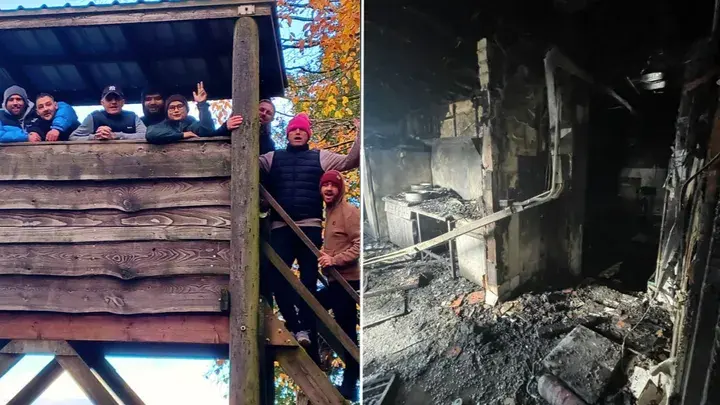What are the different types of fire blanket?
- Matthew Gulley
- Mar 11, 2024
- 4 min read

In our daily lives, fire safety often takes a back seat until a real emergency occurs. Yet, fires can strike suddenly, anywhere. While we hope to never face such situations, being prepared is crucial. Enter the fire blanket – a simple yet highly effective tool for tackling smaller fires.
This in-depth guide dives into the science behind fire blankets, explores their various types, and elucidates the scenarios where they prove invaluable. Additionally, it provides a step-by-step tutorial on using fire blankets correctly and offers insights into selecting the right one for specific needs.
Fire blankets are specialized safety devices engineered to extinguish small fires. Crafted from flame-resistant materials like fiberglass or aramid fibres, they find widespread utility in areas prone to minor fires, such as kitchens.
How do fire blankets work?
Operating on the principle of smothering fires by cutting off their oxygen supply, fire blankets act swiftly and effectively. Conveniently packaged for quick deployment, they provide a crucial barrier between the fire and its oxygen source.
What are the applications of fire blankets?
Fire blankets serve a multitude of functions in fire safety:
Suppressing Small Fires: Ideal for swiftly containing kitchen fires, including those fuelled by grease or oil, before they escalate.
Ensuring Safe Evacuation: Acting as a protective shield, fire blankets facilitate safe passage through flames during escape scenarios.
Extinguishing Clothing Fires: When clothing catches fire, fire blankets can effectively smother the flames post the "stop, drop, and roll" manoeuvre.
Providing Emergency First Aid: In addition to firefighting, fire blankets can be repurposed to treat burns, safeguarding the affected area from further harm.
Professional Contexts: Widely used in laboratories and industrial settings, fire blankets mitigate the risk of minor fires.
What materials are fire blankets made of?
Fire blankets are crafted from fire-resistant materials tailored to endure high temperatures. Common materials include fiberglass, wool treated with fire-retardant compounds, and high-performance aramid fibres like Kevlar or Nomex.
What are the advantages of using fire blankets?
Incorporating fire blankets into fire safety protocols offers numerous advantages:
User-Friendly: Designed for simplicity, fire blankets can be operated by individuals with minimal training.
Efficacious on Small Fires: Particularly adept at quelling minor conflagrations, they swiftly smother flames, cutting off their oxygen supply.
Safe for Electrical Fires: Unlike water or certain extinguishers, fire blankets pose no risk of electrocution when used on electrical fires.
Damage Mitigation: By smothering fires, they minimize damage compared to conventional extinguishers that disperse chemicals.
Reusability: Often reusable after minor fires, they offer a cost-effective solution, albeit requiring replacement after substantial fires.
Portability: Housed in compact containers, fire blankets are portable, making them suitable for diverse settings.
How do fire blankets operate? Fire blankets suppress fires by suffocating them, eliminating their oxygen supply. By covering the fire completely, they disrupt the fire triangle – fuel, heat, and oxygen – ultimately extinguishing the flames.
What different types of fire blanket are available?
Fire blankets come in various types tailored to specific applications:
Fiberglass: Commonly used, these blankets are resilient to high temperatures and effective in smothering small fires.
Wool: Treated with fire-retardant compounds, wool blankets offer enhanced insulation against heat.
Aramid Fibres: Harnessing synthetic fibres like Kevlar or Nomex, these blankets boast exceptional heat resistance and durability.
Specialized Variants: Tailored blankets cater to diverse needs, including kitchen use, industrial settings, and welding operations.
How to utilize a fire blanket effectively? Proper utilization is key to pre-empting small fires from escalating. Follow these steps:
Unfurl the Blanket: Release the blanket from its container using the provided tabs.
Grasp Correctly: Hold the blanket using the tabs or corners, ensuring hand protection.
Cover the Fire: Completely envelop the fire with the blanket, cutting off its oxygen supply.
Turn Off Heat Source: If safe to do so, switch off the heat source to prevent reignition.
Leave in Place: Allow the blanket to remain in place until the fire is completely out.
Seek Professional Assistance: Always contact the fire department, even after using a fire blanket, to ensure the situation is fully under control.
What standards do fire blankets adhere to?
Fire blankets must meet specific standards to ensure their safety and effectiveness. These include EN 1869:1997 (EU), BS-EN 1869:2019 (UK), AS/NZS 3504:2006 (Australia/NZ), ASTM F 1989-05, and UL 2151 (US). Look for certification labels indicating compliance with relevant standards.
How to choose the right fire blanket?
Consider these factors when selecting a fire blanket:
Intended Use: Choose a blanket suited to your specific needs, whether for household, outdoor, or professional use.
Type of Fire Risk: Select a blanket tailored to the types of fires you're likely to encounter.
Size: Ensure the blanket is large enough to cover potential fire scenarios adequately.
Safety Standards: Opt for blankets certified to meet safety standards in your region.
Quality and Brand Reputation: Trust reputable brands known for their quality and reliability.
In conclusion, fire blankets are indispensable tools in fire safety, offering simplicity, effectiveness, and versatility. Understanding their operation, types, and selection criteria empowers individuals to mitigate fire risks effectively and safeguard lives and property.




Comments